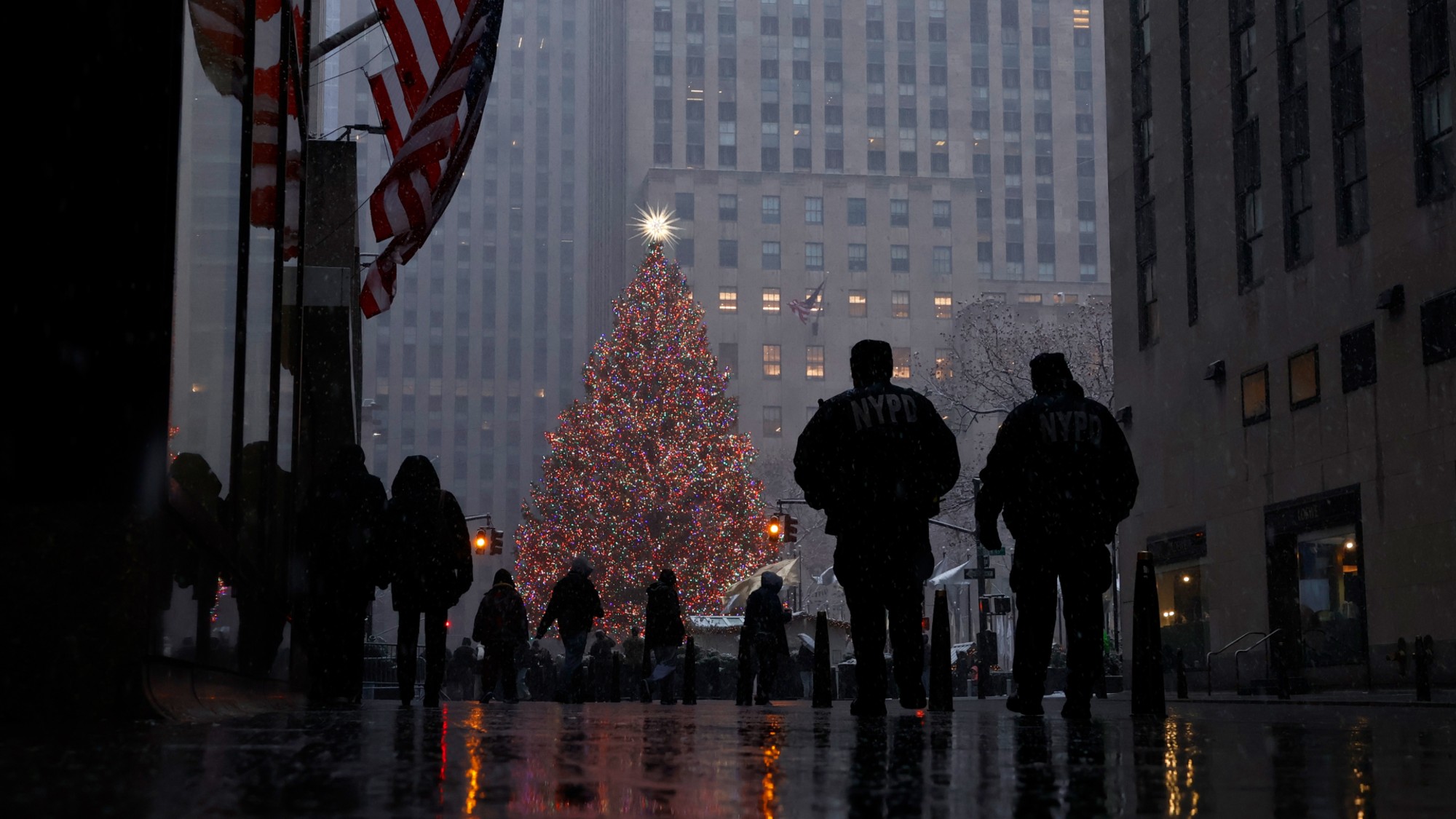Swine flu: Are we prepared for the worst?
Only 16.5 million doses of the swine flu vaccine have been produced in spite of a promise by The White House that 80 million to 120 million doses would be ready by mid-October.
So it’s finally official, said Tevi Troy in National Review Online. Just as the death toll from the H1N1 swine flu virus passed the 1,000 mark last week, President Obama declared the pandemic a full-blown “national emergency.” The announcement was not intended to alarm anyone, the White House rushed to assure us. A presidential declaration of national emergency is a formality that allows hospitals to set up makeshift triage facilities “to handle a potential surge of sick patients.” What should alarm us, though, is the shortage of swine flu vaccine. Back in July, the White House promised that 80 million to 120 million doses of vaccine would be ready by mid-October. Only 16.5 million doses have been produced. The good news is that, so far at least, the virus seems no more deadly than a typical seasonal flu virus. But among its victims already is the government’s credibility.
This is shaping up as Obama’s Hurricane Katrina, said Rick Moran in TheAmericanThinker.com. Just as George W. Bush was embarrassed by his lackadaisical handling of the disaster in New Orleans, President Obama should be tarnished by his failure to prepare us for the swine flu pandemic. You would think that, given the fanfare with which the administration unveiled its supposedly “aggressive” swine flu strategy in July, “little details like having enough vaccine for everyone who wanted it would have been taken care of.” Not only are we short of vaccine, said Michael Balboni in Newsday, the distribution of what we do have has been chaotic. Here in New York, the doses have been doled out seemingly at random among vaccination centers and individual doctors, with no clear record of what’s gone where. “If our government can’t adequately respond to a problem it saw coming six months ago, what will it do if we get surprised?”
It could have been a lot worse, said Michael Shear in The Washington Post. At least the White House had the foresight to start production of a vaccine back in April. And the administration continues to insist that by December, fully 200 million swine flu shots will be available, despite reports by manufacturers of “slower-than-expected growth of the vaccine inside chicken eggs.” To be fair, the logistics of vaccinating a whole nation are enormously daunting, said Dan Haley in The Denver Post. And it hardly helps matters that all manner of Obama haters are gleefully spreading rumors online and on shock radio that the H1N1 vaccine has appalling side effects, is “tainted with antifreeze,” or is part of a government plot to kill millions of Americans.
The Week
Escape your echo chamber. Get the facts behind the news, plus analysis from multiple perspectives.

Sign up for The Week's Free Newsletters
From our morning news briefing to a weekly Good News Newsletter, get the best of The Week delivered directly to your inbox.
From our morning news briefing to a weekly Good News Newsletter, get the best of The Week delivered directly to your inbox.
“Ignore the hysterics,” said The Boston Globe in an editorial, and get yourself vaccinated. Yes, there’s a risk. Any time you inject a foreign agent into your body, there’s a chance you’ll suffer a negative reaction. In the case of the H1N1 vaccine, that risk is negligible and far outweighed by the benefits. But for public health officials, the biggest challenge still lies ahead, when the vaccine is inevitably—and wrongly—blamed for any illnesses that may hit some of the millions of people vaccinated. The federal government had better be prepared to convincingly refute any such misinformation. Otherwise, “expect even more Americans to fall victim to swine flu.”
A free daily email with the biggest news stories of the day – and the best features from TheWeek.com
-
 How climate change is affecting Christmas
How climate change is affecting ChristmasThe Explainer There may be a slim chance of future white Christmases
-
 The MAGA civil war takes center stage at the Turning Point USA conference
The MAGA civil war takes center stage at the Turning Point USA conferenceIN THE SPOTLIGHT ‘Americafest 2025’ was a who’s who of right-wing heavyweights eager to settle scores and lay claim to the future of MAGA
-
 The 8 best drama movies of 2025
The 8 best drama movies of 2025the week recommends Nuclear war, dictatorship and the summer of 2020 highlight the most important and memorable films of 2025
-
 Has Zohran Mamdani shown the Democrats how to win again?
Has Zohran Mamdani shown the Democrats how to win again?Today’s Big Question New York City mayoral election touted as victory for left-wing populists but moderate centrist wins elsewhere present more complex path for Democratic Party
-
 Millions turn out for anti-Trump ‘No Kings’ rallies
Millions turn out for anti-Trump ‘No Kings’ ralliesSpeed Read An estimated 7 million people participated, 2 million more than at the first ‘No Kings’ protest in June
-
 Ghislaine Maxwell: angling for a Trump pardon
Ghislaine Maxwell: angling for a Trump pardonTalking Point Convicted sex trafficker's testimony could shed new light on president's links to Jeffrey Epstein
-
 The last words and final moments of 40 presidents
The last words and final moments of 40 presidentsThe Explainer Some are eloquent quotes worthy of the holders of the highest office in the nation, and others... aren't
-
 The JFK files: the truth at last?
The JFK files: the truth at last?In The Spotlight More than 64,000 previously classified documents relating the 1963 assassination of John F. Kennedy have been released by the Trump administration
-
 'Seriously, not literally': how should the world take Donald Trump?
'Seriously, not literally': how should the world take Donald Trump?Today's big question White House rhetoric and reality look likely to become increasingly blurred
-
 Will Trump's 'madman' strategy pay off?
Will Trump's 'madman' strategy pay off?Today's Big Question Incoming US president likes to seem unpredictable but, this time round, world leaders could be wise to his playbook
-
 Democrats vs. Republicans: who are US billionaires backing?
Democrats vs. Republicans: who are US billionaires backing?The Explainer Younger tech titans join 'boys' club throwing money and support' behind President Trump, while older plutocrats quietly rebuke new administration